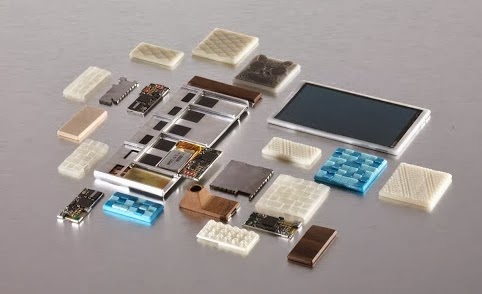Ara is designed to offer consumers choice, with an open platform design that provides a basic chassis from Google with, the option to customize functionality using modular components sourced from third-party hardware developers. Users could buy sensors, additional storage, more battery capacity, better speakers and so on, slotting in and out components as needed. Including stupid ones, by the way: project lead and DARPA vet Paul Eremenko tells TIME an “incense burner” could be a module
Google wants to get the price point on the base Ara hardware to $50, but you wont’ get much in exchange for that – the only connectivity on board will be Wi-Fi at that price point. But the point is that users could build it up however they liked, rather than being stuck with whatever they got when they signed up. But that entails additional expense: Depending on what you want your phone to be able to do, it’s easy to see the price rising quickly.
This leads to a couple of different analogies about how this might work out in practice – it’s a little like a razor and blades setup, offering the potential for a continuing revenue stream from upgrade components. But it’s more akin to a freemium software model, since the modules aren’t expendable like razor blades, but rather optional add-ons that enhance the experience, but aren’t strictly necessary to it.
Ara’s aim isn’t to upsell, however, or at least that doesn’t seem to be the intent of the Ara founding team. Instead, it wants to bring full-featured devices to the world’s next 5 billion potential smartphone users, without forcing them to swallow a huge price tag as well. Of course, this will definitely appeal to hobbyists as well, including the same kind of people who liked the Handspring Visor and its Springboard, but with modern smartphone styling that ATAP says will keep overall device depth down to less than 10mm, with 4mm deep modules.
The TIME profile also sheds light on some of the fundamental mechanics of how Ara works. Modules are designed to slot in to each compartment on the basic chassis interchangeably, regardless of what each does. They’re also hot-swappable, so you don’t need to power down the phone to replace individual parts. Finally, the modules are secured to the device using hardware latches, which use magnets to lock stuff in place. That lock is released using an app of the phone, so that they won’t fall out when jostled or when the phone drops.
Ara is definitely an amazing innovation, and a project that it would be amazing to see come to fruition. It’s also massively ambitious, and not every experimental tech Google develops ends up as a proper shipping project. Modularity has a lot to potentially offer the smartphone market (and could also be very interesting when applied to tablets) but there’s a lot of ground to cover between here and selling these things in stores. Still, if anyone has the resources and runway to make it happen, Google is a pretty good candidate.
